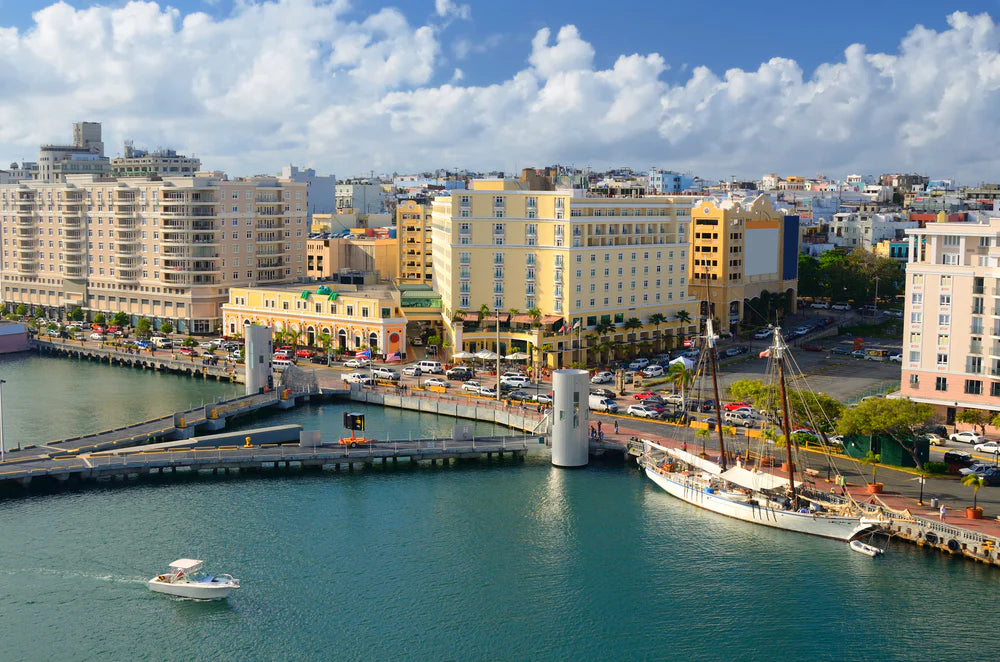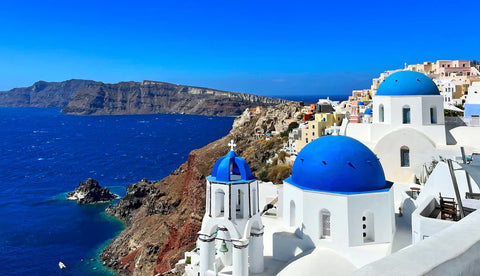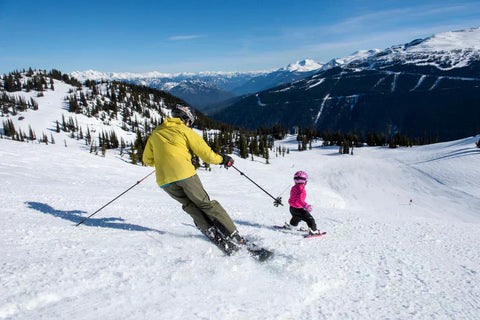Puerto Rico combines beautiful Caribbean beaches and jungle-strewn mountains with gorgeous historical landmarks, amazing food, and a pulse-pounding nightlife scene. Americans looking for a close-to-home vacation find Puerto Rico offers all the perks of international travel without the need for passports and travel visas. This Puerto Rico travel guide provides a comprehensive overview of the best places to go in Puerto Rico, including how to get there, what to see, and what to eat when you visit the Isla del Encanto—the Island of Enchantment.
The Basics
Nestled between the Caribbean Sea and the Atlantic Ocean, Puerto Rico is an organized, unincorporated territory of the United States, with a population of approximately 3.3 million people. Spanish is the main language, with about half the population speaking English to some degree. English-speaking Puerto Ricans are most common in the island's cities and popular tourist destinations. The capital, located on the island's northwest coast, is San Juan.
Puerto Rico offers a rich combination of native and colonial Spanish history, pristine beaches, jungle-strewn mountains, and unique cultural experiences. You can spend your morning exploring a Spanish fort, the afternoon snorkelling, and the evening enjoying fine dining and vibrant nightlife, making the island a popular destination for domestic and international travellers.
When to go
Peak tourism season runs during Puerto Rico’s dry season from December to April, with a second tourist spike in July and August. If you want to avoid the crowds, consider travelling in May, at the start of the wet season. The chance of rain is higher at this time, but tourism levels are lower, and you can often find discounted accommodations.
Fall is another period where you can dodge the crowds in Puerto Rico. Hurricane season runs from June to November. While the risk of a hurricane coinciding with your trip is low, it’s something to keep in mind. If you choose to visit Puerto Rico during hurricane season, consider taking out travel insurance in case your flights are cancelled. You should also pack some warm, rainproof clothing and extra medication if needed.
Airport Options
The Luis Muñoz Marin International Airport is the largest Puerto Rico airport. Commonly called the San Juan Airport, Luis Muñoz Marin is a three-mile drive from San Juan and serves Isla Verde and the north of the main island. Over twenty commercial airlines use the airport, making it the busiest, but also most accessible, way to travel to Puerto Rico. The San Juan, Puerto Rico airport code is SJU.
Your other Puerto Rico airport options include Rafael Hernández Airport (BQN) in Aguadilla, located in the northwest of the island. Smaller than the Luis Muñoz Marin International Airport, the Aguadilla airport primarily serves JetBlue, Frontier, and United Airlines flights from Orlando and Tampa, Florida. The Mercedita International Airport (PSE) near Ponce, Puerto Rico, serves Ponce and the south of the island.
Do You Need a Passport to Go to Puerto Rico?
US citizens do not need a passport to travel to Puerto Rico, as the island is a US territory. A driver’s license, state ID, or similar valid photo identification is all that’s needed. International travellers, of course, require passports.
Things to do in Puerto Rico
Puerto Rico abounds in things to do. First-time travellers should definitely experience Puerto Rico’s Crash Boat Beach, a popular beach for snorkelling, diving, and surfing. The famous 16th-century Castillo San Felipe Del Morro is another must-see, as is the neighbourhood of Old San Juan.
However, some of the best places to go in Puerto Rico are off the beaten tourist path. If you’re looking for more than the usual Puerto Rico travel guide recommendations, consider these hidden gems:
- Caja de Muertos: Despite its foreboding name, Caja de Muertos (Coffin Island) is a beautiful uninhabited island off Puerto Rico’s southwestern coast. Once the abode of mutineers and pirates, the island is now home to the Caja de Muertos Nature Reserve, which protects the island’s turtles, reefs, and dry forest environment. Accessible by ferry for day trips, Caja de Muertos is often quieter than nearby attractions, even during peak tourist season.
- Lago Dos Bocas: Just north of the town of Utuado, the man-made Lago Dos Bocas (Lake of Two Mouths) is surrounded by the mountains of central Puerto Rico. Boat trips to the lake often drop passengers off at lakeside restaurants.

- Rio Camuy Cave Park: Two hours west of San Juan lies the Rio Camuy Cave Park, home to soaring ten-story high limestone caverns filled with stalactites. The cave complex was carved by the Rio Camuy, the third-largest underground river in the world. Reservations can be made at 787-898-3100, 787-999-2200 ext 3474 for guided tours. Be sure to wear closed-toed footwear and bring a flashlight and water, as the caves are hot and humid.
- Flamenco Beach: Located in Culebra, Flamenco Beach is known for its turquoise waters, white sand . . . and the graffiti-covered remains of a WWII-era military tank, a reminder of when the US military used the beach for artillery practice. Perfect for a beach vacation!
- El Cemí Museum: Much of the culture and history tourists encounter in Puerto Rico stems from the island’s Spanish colonial era. For a glimpse into the lives of the island’s original inhabitants, check out the El Cemí Museum in Jayuya. Housing a collection of ancient Taíno religious artifacts, the museum was built in the shape of a stone Cemí, or Taino deity.
- Tanamá River: A day trip to the Tanamá River in Utuado allows you to hike, rock-climb, swim in natural pools, and tube through a 1,000-foot river cave.
- La Piedra Escrita: Located in the middle of the Saliente River in Coabey, Jayuya, La Piedra Escrita (The Written Stone) is a granite boulder covered with prehistoric petroglyphs.
- Museo del Niño de Carolina: Want to keep the kids happy for a day? The Museo del Niño de Carolina (Carolina Children’s Museum) includes interactive exhibits, a small zoo, a playground, go-karts, and more.
How to get around Puerto Rico
Renting a car in Puerto Rico is the best way to explore the island's countryside and remote locations. The island has toll roads, most of which accept cash or AutoExpreso, a prepaid toll system. Car rentals often come with AutoExpreso tags included, so you don’t have to pay toll fees until you return the vehicle. Road signs are in Spanish but use the same symbols and shapes as the mainland US. If you’re a younger traveller, be aware you need to be 25 to rent a car in Puerto Rico.
You may not need a car if you’re staying in a metro area, such as San Juan. Puerto Rico public transportation includes taxis, rideshares, buses, and trains at reasonable rates. Some of the most popular Puerto Rico public transportation options are públicos—large vans that transport people to popular destinations such as airports and tourist attractions. If you choose to travel by público or taxi, be sure to carry cash, as they rarely accept credit cards.
If you’re travelling between islands in Puerto Rico, your best options are ferries and small commuter planes. Most rental agencies don't allow you to take their vehicles off the main island, so board ferries on foot and use públicos at your destination or rent a car or even a golf cart where the ferry docks.
Where and what to eat in Puerto Rico
Puerto Rico cuisine blends the foods and spices of the indigenous Taíno Arawak with Spanish and African influences. Here are just a few suggestions of what to eat in Puerto Rico:

- Mofongo: Deep-fried green plantain mashed with garlic, olive oil, and pork.
- Lechón asado: A whole pig marinated in Adobo sauce and roasted over coals for juicy meat and crispy skin.
- Frituras: Deep-fried fritters stuffed with seafood, pork, beef, or chicken. Excellent with an ice-cold beer (Please note thedrinking age in Puerto Rico is 18).
Local food is easily procured from food carts. For restaurants, we recommend the following:
- 1919 combines contemporary dining with local produce and spectacular ocean views from its location in the Condado Vanderbilt Hotel.
- Lechonera El Rancho Original is a 45-minute drive outside of San Juan and is famous for its lechonera, or roasted pork served right off the spit.
- La Casita Blanca is popular with celebrities for its traditional cuisine.
- Marmaladefocuses on multi-course, farm-to-table meals.
- Los Yeyo' la Casa Del Mofongois a local favourite and offers exceptional mofongo and empanadas at decent prices. It’s busy, so you may want to bring a tote in case you need to order take-out.
Puerto Rico is one of the most popular travel destinations in the world. Why not make the Island of Enchantment part of your next adventure?





